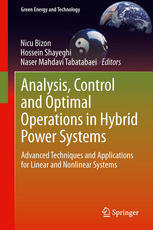

Most ebook files are in PDF format, so you can easily read them using various software such as Foxit Reader or directly on the Google Chrome browser.
Some ebook files are released by publishers in other formats such as .awz, .mobi, .epub, .fb2, etc. You may need to install specific software to read these formats on mobile/PC, such as Calibre.
Please read the tutorial at this link: https://ebookbell.com/faq
We offer FREE conversion to the popular formats you request; however, this may take some time. Therefore, right after payment, please email us, and we will try to provide the service as quickly as possible.
For some exceptional file formats or broken links (if any), please refrain from opening any disputes. Instead, email us first, and we will try to assist within a maximum of 6 hours.
EbookBell Team

4.0
66 reviewsThe book’s text focuses on explaining and analyzing the dynamic performance of linear and nonlinear systems, in particular for Power Systems (PS) including Hybrid Power Sources (HPS). The system stability is important for both PS operation and planning. Placing emphasis on understanding the underlying stability principles, the book opens with an exploration of basic concepts using mathematical models and case studies from linear and nonlinear system, and continues with complex models and algorithms from field of PS. The book’s features include: (1) progressive approach from simplicity to complexity, (2) deeper look into advanced aspects of stability theory, (3) detailed description of system stability using state space energy conservation principle, (4) review of some research in the field of PS stability analysis, (5) advanced models and algorithms for Transmission Network Expansion Planning (TNEP), (6) Stability enhancement including the use of Power System Stabilizer (PSS) and Flexible Alternative Current Transmission Systems (FACTS), and (7) examination of the influence of nonlinear control on fuel cell HPS dynamics.
The book will be easy to read and understand and will be an essential resource for both undergraduate and graduate students in electrical engineering as well as to the PhDs and engineers from this field. It is also a clear and comprehensive reference text for undergraduate students, postgraduate and research students studying power systems, and also for practicing engineers and researchers who are working in electricity companies or in the development of power system technologies. All will appreciate the authors' accessible approach in introduction the power system dynamics and stability from both a mathematical and engineering viewpoint.